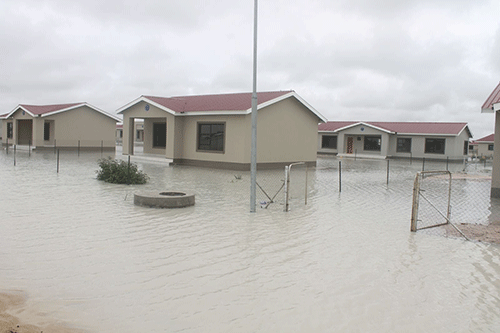NAMIBIA would need at least N$10.8 billion annually to reach its green growth objectives between now and 2030.
The funding will bridge existing gaps in areas of water resources, agriculture, forestry, coastal zones, tourism, human health, and disaster risk management.
These figures are contained in the latest African Development Bank (AfDB) Country Focus report for 2023, which indicates that the country will need to spend US$565 million yearly, which is over N$10.8 billion, in order to meet its green growth goals in the above areas.
The report further projects that Namibia will also be required to raise about US$5.3 billion over a 10-year period to achieve its multi-faceted climate change targets.
In order to reach the set financial objectives in both the climate change and green growth areas, the AfDB suggests that the local private sector will need to play a more prominent role in closing the climate finance gap, especially given the limited fiscal space on government’s already constrained budget, which is impacted by external economic shocks.
“Scaling up of private sector finance is being hindered by the constrained growth of the private sector, including existing debt vulnerabilities that may limit Namibia’s access to private finance, few financial products and sources that can finance private sector investments, and limited participation by the private sector in the coordination process of green growth.
Limited skills to meet green growth and climate action needs are also another hindrance,” reads the report.
The largest share of climate finance flows in Namibia, which is 98%, is from public finance, with private finance accounting for only 2%.
Between 2015 and 2020, climate finance flows of about 63% came from international public sources such as bilateral development agencies, climate funds, and Multilateral Development Banks (MDBs), while 35% came from domestic public sources; primarily from the country’s national budget.
Private sector finance, mainly targeting the renewable energy sector, only represented about 2% of the total climate finance flowing into the country during this period.
This low figure has been attributed to limited data on the private sector’s contribution to climate change and the private sector’s low awareness of the climate change investment opportunities in Namibia, as well as the high perceived and actual risks attached to investments in the continent.
Namibia remains highly vulnerable to climate change, despite being a low carbon-emitting economy.
The country’s share of Global Greenhouse Gas (GHG) emissions stood at 0.03% in 2021, but despite this low contribution, the country is highly vulnerable to the adverse effects of climate change due to a combination of geographical and social factors.
“In order to make further strides, Namibia needs to invest in appropriate technologies and natural capital data management capacity for improved valuation and ensure that it benefits from international agreements. The country also needs to widen institutional reforms targeting natural resource governance to cover all sectors,” states the report.
Namibia is one of the largest and driest countries in Sub-Saharan Africa with persistent droughts and floods, erratic rainfall, and high swings in temperatures which drive water scarcity.
The country’s reliance on its endowment of natural resources, which includes land, minerals, and biodiversity, coupled with its high-income inequality and high exposure to external shocks, increases its vulnerability to climate change.
- ohembapu@nepc.com.na


